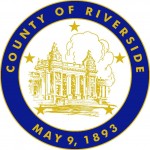Amid a profusion of religious ceremony during the Christmas season, it may come as a surprise that throughout its first half-century, Idyllwild had not a single church.
There was simply no population base to support a church organization. Despite its 1920s boom, the village remained a summer colony. The 1930 census lists barely three dozen claiming Idyllwild as primary residence.
Idyllwild was a company town — essentially all businesses were subsidiaries of Idyllwild Inc. — so its boss, devout Methodist Claudius Lee Emerson, engaged ministers and sponsored Sunday services.
Enhanced by a folding pump organ, they were held in the natural tree-shaded bowl below today’s markets and post office, amid lush marsh grass and ferns beside Strawberry Creek
The first summer minister in the early 1920s, Louise Cole later recalled, tented with his large family on Strawberry Creek at an abandoned sawmill site totally lacking in amenities. Such deprivation led in 1925 to construction of the manse that stills stands on North Circle Drive as housing.
Emerson’s bankruptcy and departure in 1936 left an untimely void just as Idyllwild’s year-round population was beginning to grow. It was the Catholics who responded first.
A 1942 visit to Idyllwild inspired Fr. Malachy O’Sullivan, pastor of St. Anthony’s in San Jacinto, to arrange the purchase of an old cabin to serve as a chapel. His proposed “Our Lady of the Pines” parish was renamed Queen of Angels by the Bishop of San Diego, but the church was a reality by summer’s end.
In 1944, the 10-family parish lost its home to heavy snow, which caved in the roof, and wartime materials shortages precluded rebuilding. So the congregation began meeting at the Rustic Theatre, then housed in what’s now Silver Pines Lodge until 1947, when they occupied the present Catholic church.
Meanwhile, in 1946 Protestants organized Community Presbyterian Church under the temporary ministry of Hugo Fulton and crowded into the manse for services.
Its lay leadership soon filled with Idyllwild household names like Humber, Casebeer, Kretsinger, Belden, Null, Boss, McCaghren and Bischoff. The church building took three years to complete between 1950 and 1953, although services were held in the basement by 1951.
A local Christian Science Society formed in 1949 and began meeting midweek at Desert Sun School, where their faith was shared by founders Edith and Richard Elliott, and Sundays at the Rustic or Town Hall. They eventually acquired a nursery plot across the street, where their church was completed in 1957.
Idyllwild’s church options began broadening in the late 1950s as the population more than tripled from its 604 at midcentury. An Episcopalian “cottage meeting” started using the Presbyterian manse in 1955. Dr. Muriel Haskell’s short-lived Center of Creative Living at the Four Chimneys complex on Delano Road launched public services in 1957. In the 1960s, its metaphysical niche was filled by Science of Mind and a branch of the Holy Superet Light Church out of Los Angeles. And more familiar names like Bible Church and Chapel in the Pines appeared.
Idyllwild was growing up, well on its way toward today’s multiflavored church scene.
Bob Smith is a researcher and archivist with the Idyllwild Area Historical Society. He welcomes comments, questions, corrections and suggested topics for this column at [email protected].










